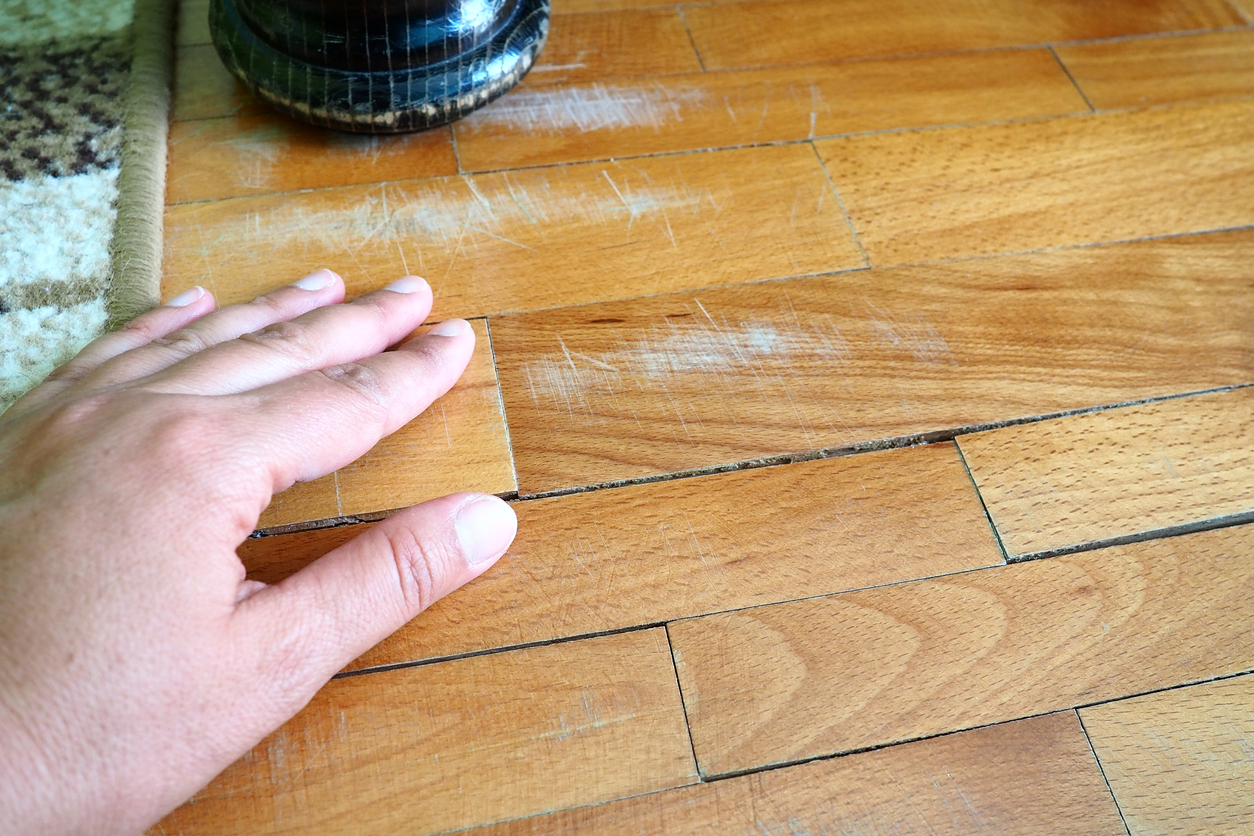Moving furniture can often leave behind scuff marks on walls and scratches on wood floors. Whether you’re rearranging your home or settling into a new space, these blemishes can be frustrating to deal with. Fortunately, you can fix most scuffs and scratches using simple techniques and tools. Here’s how to restore your walls and floors to their original condition.

How to Get Scuff Marks Off Walls
Scuff marks on walls are common when moving large furniture, but they can often be removed with household items.
1. Use a Clean Damp Cloth or Sponge
- Start with a soft, damp microfiber cloth or sponge and gently wipe the mark.
- If the scuff is minor, water alone may be enough to lift it.
2. Try a Magic Eraser
- Melamine foam sponges, like Magic Erasers, work well for stubborn marks.
- Dampen the sponge slightly and rub the scuff in circular motions until it fades.
3. Baking Soda Paste
- Mix a small amount of baking soda with water to create a gentle scrubbing paste.
- Apply it to the scuff using a soft cloth and rub lightly, then wipe clean with a damp rag.
4. Mild Dish Soap and Water
- Add a few drops of dish soap to warm water and dip a cloth into the solution.
- Scrub the scuff mark gently, then dry the area with a clean towel.
5. Touch-Up Paint
- If scuffs persist, a fresh coat of matching paint can restore the wall’s appearance.
- Use a small brush or roller for even coverage.
How to Fix Scratches on Wood Floors
Wood floors can easily get scratched when moving heavy furniture, but there are several ways to remove scuff marks.
1. Use a Wood Floor Cleaner
- For light scratches, clean the area with a wood floor cleaner to remove dirt and debris.
- Buff the scratch with a soft cloth to see if it becomes less noticeable.
2. Apply a Wood Marker or Crayon
- For surface-level scratches, use a wood stain marker or furniture repair crayon that matches your floor color.
- Fill in the scratch and buff with a soft cloth to blend the repair.
3. Use a Walnut or Coconut Oil
- Rubbing a walnut over a scratch can naturally fill in and darken the area.
- You can apply coconut oil with a cloth to minimize the appearance of minor scratches.
4. Try Wood Filler for Deep Scratches
- If the scratch is deep, apply a wood filler that matches your floor’s color.
- Once dry, sand the area lightly and finish with a wood stain or sealant.
5. Sand and Refinish the Floor
- For large scratches or heavily damaged areas, sanding and refinishing may be necessary.
- Use fine-grit sandpaper to smooth the scratch, then apply a matching stain and sealant.
Preventing Future Damage
To avoid wall scuffs and floor scratches when moving furniture, consider using these protective measures:
- Furniture Sliders – Place sliders under heavy furniture to prevent floor damage.
- Furniture Moving Straps – Use straps for better control when lifting and carrying furniture.
- Protective Padding – Cover furniture edges with blankets or foam to prevent marks on walls.
Need Help Moving Furniture?
If you’re concerned about damaging your floors and walls during a move, professional movers can help. Aaron Bros. Moving System, Inc. offers expert moving services focused on keeping your home and belongings safe. Contact us today for reliable assistance with your next move!


